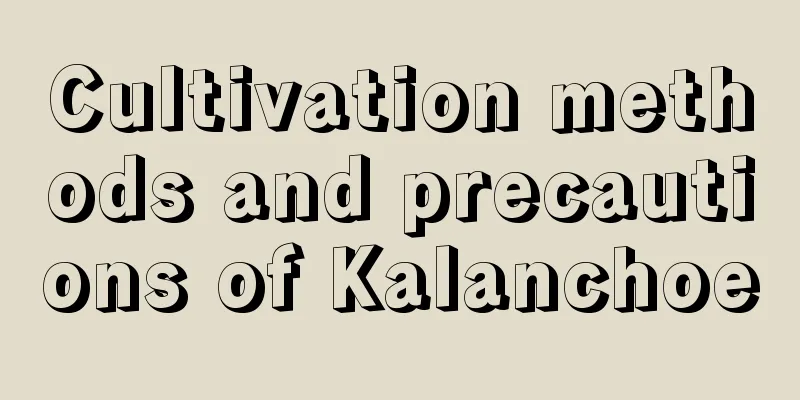Cultivation methods and precautions of Kalanchoe

1. TemperatureThe ideal temperature for Kalanchoe is between 15-25℃. It will enter a dormant state above 30℃ and below 5℃. If the temperature is above 24℃ in summer or below 10℃ in winter, its flowers will not perform well. 2. LightingIt is a sun-loving flower. Placing it in a well-lit location in winter and spring will promote the opening of the flowers. During the midsummer dormancy period, avoid direct sunlight and place it in a place with bright scattered light. 3. SoilThe potting soil should be loose and breathable, preferably sandy soil with humus content, and water accumulation must be avoided. 4. WateringWhen watering Kalanchoe, you must follow the principle of watering thoroughly when the soil is dry. Do not allow water to accumulate in the soil for a long time. During the flowering period, just keep the soil in the pot slightly moist. Long-term waterlogging will cause root rot, yellow spots will appear on the leaves, and the flowering period will be shortened. 5. Common pests and diseases1. Aphids: They reproduce very quickly and require frequent intervention. 2. Scale insects: They mainly occur in poorly ventilated areas with relatively constant humidity. You can wipe them off with cotton or soft cloth dipped in neutral detergent. You can use carbendazim or cypermethrin for prevention and control. 3. Powdery mildew: It can be prevented with garlic juice. Before the disease occurs in these two seasons, you can spray diluted garlic juice on its leaves. After the disease occurs, you can spray oxycarboxin to control the disease. 6. NotesIn the middle and late stages of the flowering period of Kalanchoe, that is, the period from the late Spring Festival to early summer, the withered flowers should be pruned off in time, and the upper part of the flower clusters can be completely removed by heavy pruning. Leave the lower 3-5 leaves and let them sprout again. As long as there are sufficient nutrients, it may produce a second flower, which will extend the flowering period and make the plant shape more complete. |
>>: When does Kalanchoe bloom?
Recommend
When and how to repot Christmas cactus
Time to repot Christmas cactus It is recommended ...
What is the best fertilizer for jackfruit trees?
Time to fertilize jackfruit tree Fertilization of...
White crystal chrysanthemum cultivation methods and precautions
How to cultivate white chrysanthemum Soil selecti...
Management of the flowering period of large-flowered cymbidium (how long is the flowering period, can fertilizer be applied during flowering)
1. How long is the flowering period of cymbidium?...
Technical points for planting citrus seedlings
In the process of planting citrus , there are man...
What to do if the lotus is too dense
How to deal with water lilies that are too dense ...
How to use leaf cuttings of Jinhuangxing
soil It is best to use sterilized soil for cuttin...
The propagation method of Schefflera variegated
1. Ordinary cutting method Cuttings are usually t...
Can Schefflera be hydroponically cultivated?
Can Schefflera be hydroponically cultivated? Sche...
How to prune rosemary
Rosemary pruning principles Rosemary itself is a ...
What fertilizer is good for smooth sailing?
What fertilizer to apply for smooth sailing Gener...
Alum root prefers high pots or low pots. What kind of pot is suitable for alum root?
The alum root plant is brightly colored and looks...
Sugarcane planting methods, sugarcane pictures
1. Select sugarcane sprouts When planting, sugarc...
How to grow spider plants hydroponically
Material preparation 1. Transparent proportional ...
How to grow evening mist flower
1. Maintenance methods 1. Temperature: Evening mi...









